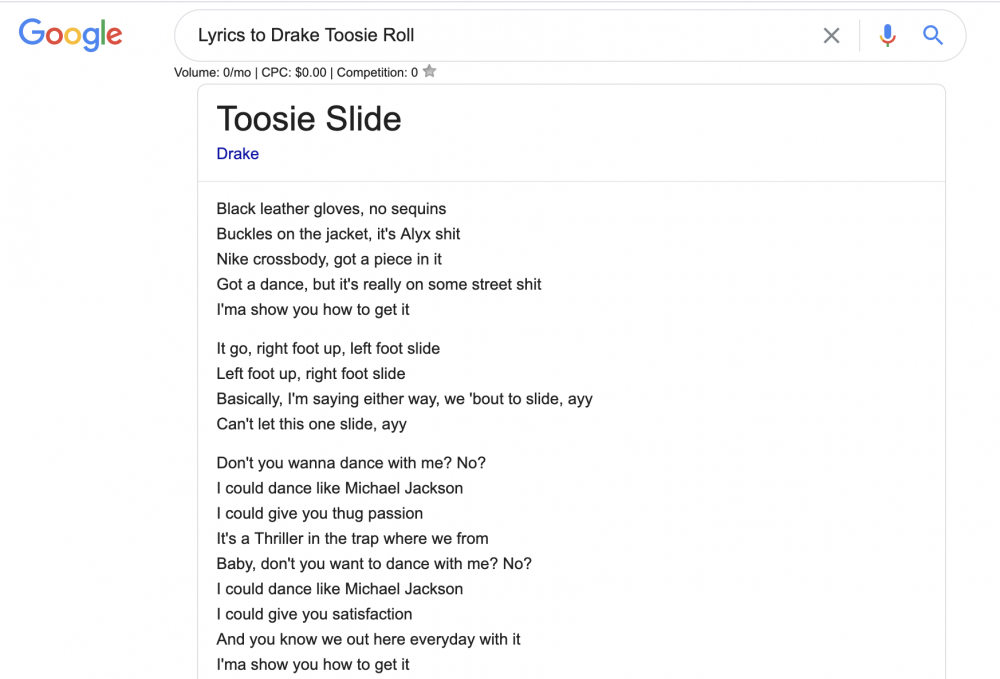Article's Content
Marketing is more like investing than art.
Our industry often views itself more like a collection of indie film producers when it should be viewing itself with a lens more along the lines of an investment manager. There are many parallels to investing and marketing that are often overlooked.
For example, similar to the way we view stocks, options, bonds, ETFs, every piece of content created; whether a blog post or a tweet – should be viewed as an asset. We should view them in this way because each asset should play a role in our ability to drive results. We should view them in this way because not all assets are created equal and some are low risk while others are high risk. We should view them in this way because we want our assets to work for us long term through dividends or exponential growth. This perspective should be rooted in the culture of every organization.
But it’s not the only one.
One of my favourite finance and investment terms is the Moat.
An economic moat is a term coined by Warren Buffett and refers to a business’ ability to maintain competitive advantages over competition in order to protect its long-term profits and market share from competing firms. Similar to a medieval castle, a business’ moat acts as protection for those inside the fortress and their riches from the enemy.
In marketing, we often overlook the fact that we have the ability to create and strengthen an organization’s Moat. When you look at this taxonomy chart outlining the various areas of a businesses’ MOAT there are a handful of sections that marketers can influence:


A few that immediately stand out are:
> Closely held trade secrets: Unlocking a growth channel others avoid
> Increasing unit value: Understanding pricing strategy & value perception
> Network effects: Assisting with iterations of the product to drive scale
> Economies of scale: Identifying organizational efficiencies & opportunities
> Advertising: Implementing efforts that drive key results
> Willingness to experiment: Fostering a culture that embraces experimentation
> Brand: Consistently communicating the brands story through various channels
> Company culture: Integration with HR and recruitment efforts
> Business model innovation: Leveraging research & experiments to drive change
The lack of focus on these areas is why most CMOs tenure is 41 months.
Many marketers over prioritize landing an award at Cannes or a keynote presentation at a conference rather than prioritizing the ways in which they can support their team to develop a content engine or better alignment between marketing and sales.
One area that falls under “Brand” but didn’t make this chart worthy of discussion is the role of search engine optimization (SEO) in the buying cycle. It could be argued that SEO deserves its own section as a structural deterrence for competition as SERP (Search Engine Results Page) dominance can act as a Moat that allows some brands to maintain and sustain organic results.
What Is SERP Dominance?
SERP dominance is when a brand has invested so strategically into content & SEO that they have captured a placement in search results for the vast majority of search terms associated with their market and ideal customers. In many industries, media companies dominate the SERP as they were early to recognize the value of organic traffic and the ability to turn that traffic into paid opportunities (ie. subscriptions, affiliates, emails, ads, etc).
Gaining dominance in the SERP is an ambitious goal and one that smart organizations are realizing is worthy of pursuit. Meghan Keaney Anderson of Hubspot offered a great perspective when discussing how Hubspot views their Enterprise Marketing Playbook:
With our SEO strategy, we’re not just playing for top placement in SERPs, we’re targeting the entire first page — ads, featured snippets, top organic results, directory listings, you name it.
The results:
Growth in our organic traffic, and a blog readership that is in the realm of major publications like HBR, Adweek and Fast Company.


Over the last few years, some of the most successful software companies have achieved SERP dominance and fully leveraged SEO as a Moat. Hubspot is certainly one of those brands generating more than $8M worth of traffic through organic channels on the back of more than 260,000 different keywords like “inbound marketing”, “marketing funnels”, “marketing software” and other variations that would be relevant to their buyers. Other SaaS brands that have done this well include companies like Canva who built a backlink empire and Salesforce who has benefit from legacy pages and content assets generating $6M worth of traffic per month.
In the chart below I show a few of the many companies that have unlocked SERP dominance in their respective space. Each of these organizations generate more than $7M worth of organic traffic to their site per year all through landing pages, tools, calculators & blog posts that are served to potential customers through Google. Optimizing conversion rates through traffic sources makes a significant difference in your company’s overall success. These companies have built a moat around their business through search and it’s assisted in their combined market cap of $654 billion.


I’ve included Mayoclinic, Investopedia & The Balance as a reference point for what SERP dominance could potentially look like for SaaS companies embracing SEO as a moat. Media companies have done a great job at using content and SEO to extract value. It’s important for organizations to look to them for inspiration while also embracing innovation to sustain and capture even more value than they have been able to.
The Risk of Creating An SEO Moat
There’s no question that with this approach comes the risk of building on top of Google.
We’ve all seen Google enter new markets, drop a bridge across an organization’s moat and enter without any friction. It’s one of the few trojan horses that every industry must consider when thinking long term about their existence and role in the market. In 2019, the CEO of TripAdvisor, Steve Kaufer answered a question about the role of SEO in their business and Google’s entrant into travel:
There is an effect of Google and other search engines moving more and more into the travel space and that’s a bit of a hotel headwind we called out. Of course, it hits all of our business units, but we continue to look at the overall positive of how this traffic finds us, how we’re able to educate them on TripAdvisor. And then at some point if you want we can go into the rest of the initiatives that we’re doing to otherwise drive long-term loyal behavior of our customer base.
Similarly, Expedia’s CEO Mark Okerstrom spoke on their earnings call about Google:
What we saw was a continued shift of essentially the free links further down the page, by other modules that were inserted and ultimately a shift of traffic from the SEO channel over to some of the other products whether it’s flight metasearch or hotel metasearch over time. Now of course as related to the hotel product, the lodging product, we are able to pick up some of that volume and that ultimately resulted in spending more on sales and marketing than we had otherwise would have. We are happy with the returns that we saw on it, but ultimately, not as good returns as we would see from the SEO channel.
This isn’t just influencing travel.
In 2014, Genius (formerly known as Rap Genius for their lyrics site) raised $40M at a valuation just under $1B. At its peak in 2018, Genius was generating nearly 55M organic visits a month directly from Google. It was an early innovator in improving the user experience for learning the lyrics of songs and the meaning behind them. Today, Genius is estimated to generate 35M (20M fewer) organic visitors per month even though they have more content and more demand.
Why?
Google entered the market and started to deliver the content directly in the SERP:


Side note: Genius did have a history for some blackhat SEO practices that may or may not have had an influence on this fall from grace in the SERP.
Point being…
SERP dominance while it’s a noble goal and can pay massive returns – it does come with risk. Mainly, the risk is associated with the companies who build their SERP dominance using content in a format that Google may want to emulate or offering a service that aligns with their product roadmap. Because SaaS companies don’t have a content-first revenue model (ex.online affiliates, information products & review sites) their value is captured through a transaction that happens later and harder for Google to replicate.
This is why organizations like Fiverr are investing in SEO and building their moat. Today, they generate more than $1.4M worth of traffic organically per month because of their content assets. In their Q3 earnings call, the CEO talked directly about how SEO has played a role in driving an increase in buyers:
When you look at the numbers at the active buyer growth on Fiverr, what you see there is an acceleration of three quarters in a row. And the majority or the biggest part of that was the organic trend. The investment that we’ve made on brand marketing paid off. The investment that we’ve done on SEO paid off. The introduction of industry stores paid off.
Fiverr is building a moat.
Not only from an SEO lens but also through brand marketing. Brand is still important. It’s often overlooked but when you combine brand excellence with content excellence – the return and competitive moat that is built can be a strong deterrent for competitors.
You see:
While algorithms may change…
Traffic volumes may change…
And the value of backlinks may even change…
The ability to connect with people long term through a meaningful brand connection will always be at the heart of marketing. The Moat that you establish through brand development is very real and should be reinforced with an effort to accomplish SERP dominance. Once the SERP is dominated; you have to deliver a valuable product, valuable services & on the front end – valuable content. Content that is loved. Products that are loved. And services that are loved.
In doing so, your corporate fortress shall be protected. As Machiavelli once said:
“The best fortress is to be found in the love of the people, for although you may have fortresses they will not save you if you are hated by the people.”








